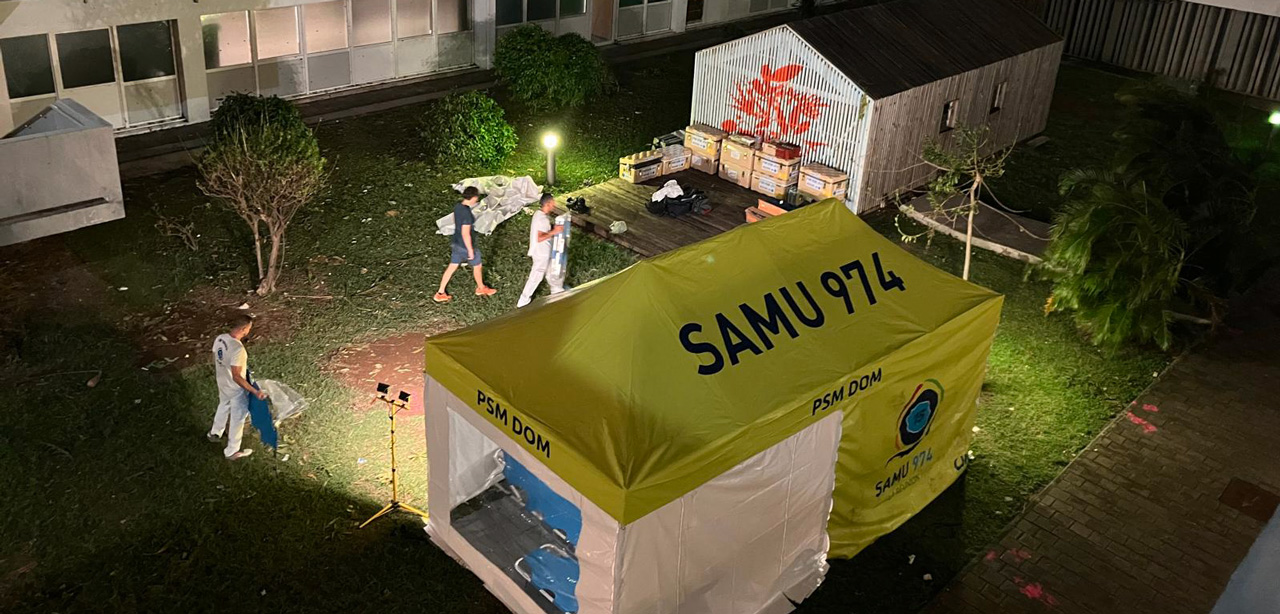We developed mathematical models to analyze a large dengue virus (DENV) epidemic in Reunion Island in 2018-2019. Our models captured major drivers of uncertainty including the complex relationship between climate and DENV transmission, temperature trends, and underreporting. Early assessment correctly concluded that persistence of DENV transmission during the austral winter 2018 was likely and that the second epidemic wave would be larger than the first one. From November 2018, the detection probability was estimated at 10%-20% and, for this range of values, our projections were found to be remarkably accurate. Overall, we estimated that 8% and 18% of the population were infected during the first and second wave, respectively. Out of the 3 models considered, the best-fitting one was calibrated to laboratory entomological data, and accounted for temperature but not precipitation. This study showcases the contribution of modeling to strengthen risk assessments and planning of national and local authorities.
Auteur : Andronico Alessio, Menudier Luce, Salje Henrik, Vincent Muriel, Paireau Juliette, de Valk Henriette, Gallian Pierre, Pastorino Boris, Brady Oliver, de Lamballerie Xavier, Lazarus Clément, Paty Marie-Claire, Vilain Pascal, Noel Harold, Cauchemez Simon
The Journal of infectious diseases, 2024, vol. 229, n°. 1, p. 10-18


